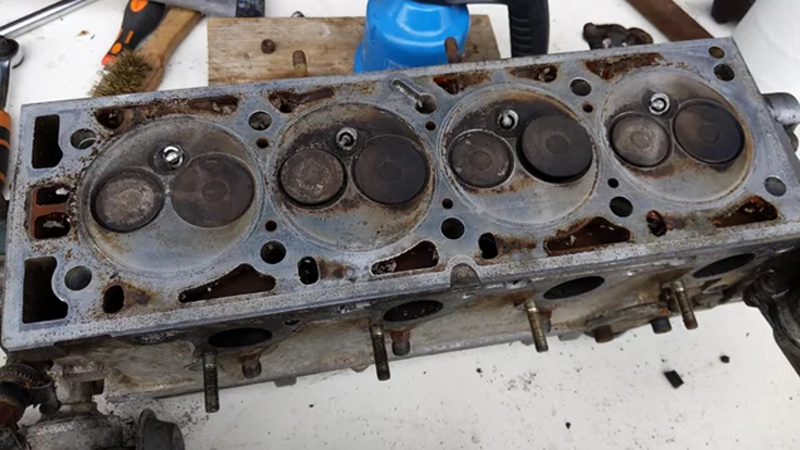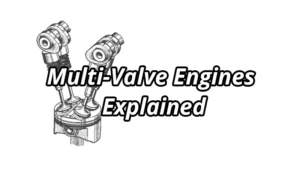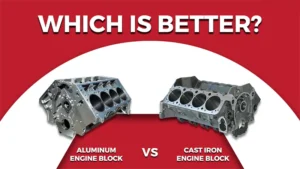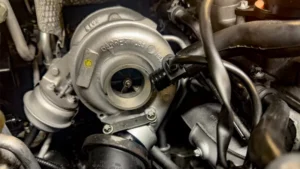When it comes to replacing a cylinder head on commercial or passenger vehicles such as the Mazda Bongo WL/RF, Isuzu 4JB1, or Mitsubishi 4D56, you may encounter two main options: brand-new cylinder heads or reconditioned (remanufactured) cylinder heads.
While reconditioned cylinder heads may initially seem like a cost-effective choice, there are many hidden factors and risks that can lead to higher costs and downtime over time. In this article, we will explore in detail:
- Why some customers choose reconditioned cylinder heads
- The common issues and risks with reconditioned cylinder heads
- The clear advantages of brand-new cylinder heads
- How choosing new parts can save money in the long run
- Practical advice for procurement managers and vehicle owners
Why Do Customers Choose Reconditioned Cylinder Heads?

Before discussing the drawbacks of reconditioned cylinder heads, it’s important to understand the real reasons behind customer decisions to buy them. This will help you better address their concerns and tailor your sales approach.
1. Price Pressure Is the Primary Factor
The most common reason for choosing reconditioned cylinder heads is cost savings. Reconditioned parts typically cost between 50% to 70% less than brand-new OEM parts. For workshops, fleet operators, or independent vehicle owners working with limited repair budgets, this price gap is significant.
Many small repair shops rely on reconditioned parts to stay competitive in pricing. They pass on these savings to customers who may not be able to afford new parts, especially in regions with lower average incomes.
2. Older Vehicles with Low Residual Value
For vehicles that have aged beyond 10 or 15 years, their overall market value and remaining service life are already limited. Owners of these vehicles often view new parts as an unjustified expense. They choose reconditioned parts to keep the vehicle running at minimal cost, accepting that the solution may be temporary.
Examples include older commercial trucks, agricultural machinery, or older generations of passenger vans like Mazda Bongo.
3. Urgency of Repairs and Downtime Minimization
In commercial operations, downtime means lost revenue. Some reconditioning shops can turn around cylinder head repairs within a day or two, enabling vehicles to return to service quickly.
Importing new cylinder heads can take several days or weeks, especially in remote regions or during supply chain disruptions. This makes reconditioned parts attractive as a quick fix.
4. Limited Availability of New Parts for Rare or Discontinued Models
Some older engines or rare vehicle models have limited or no availability of brand-new cylinder heads from OEMs or aftermarket manufacturers. In such cases, reconditioned cylinder heads may be the only viable option to keep the vehicle operational.
5. Lack of Awareness About Risks
Many end users and even some repair shops do not fully understand the technical risks and hidden costs associated with reconditioned cylinder heads. Marketing claims by some reconditioners that their products are “like new” or come with warranties can blur the reality.
6. Environmental Considerations
In developed markets, there is a growing trend to prefer remanufactured parts as an environmentally friendly option, reducing metal waste and resource consumption. However, this is mostly relevant for certified remanufactured parts made to OEM standards, not all reconditioned or “refurbished” parts.
What Are the Common Issues with Reconditioned Cylinder Heads?
While reconditioned cylinder heads can be cost-effective short term, the following technical and operational problems often reduce their reliability and service life:
1. Material Fatigue and Micro-Cracks
Cylinder heads endure extreme temperature cycles and pressure load for thousands of operating hours. Over time, this causes metal fatigue and microscopic cracks that are difficult to detect visually or even with common testing methods.
Reconditioning typically does not replace the entire casting but repairs and cleans it, so these hidden cracks may persist. Under continued stress, they can propagate, leading to coolant leaks, head gasket failures, or catastrophic cracks.
2. Warpage and Surface Flatness Issues
Overheating often causes the cylinder head to warp. Proper reconditioning requires milling the gasket surface flat again to OEM tolerances.
However, poor-quality shops may under-machine or fail to achieve uniform flatness, resulting in sealing issues. This leads to premature gasket failure, compression loss, and engine performance problems.
3. Worn or Poorly Refurbished Valve Seats and Guides
Valve seats and guides wear over time, affecting sealing and valve movement. Reconditioning sometimes involves grinding or replacing these parts.
If low-quality materials or imprecise machining are used, valves may not seat properly, causing compression leaks or burnt valves — a major cause of reduced engine power and increased emissions.
4. Thread Repairs with Helicoils or Inserts
Bolt holes damaged by repeated tightening or corrosion are repaired using inserts like helicoils. These repairs restore functionality but do not always match the original strength and fatigue resistance.
When tightened to OEM torque specs, repaired threads may fail or strip, causing expensive secondary repairs.
5. Corrosion and Deposits in Cooling Passages
Years of coolant exposure can cause rust, scale, and deposits inside the cylinder head’s coolant passages. Some corrosion penetrates deep into the metal and cannot be fully removed during reconditioning. This may cause localized overheating, warpage, and failure shortly after installation.
6. Reduced Heat Dissipation and Structural Integrity
Repeated heating and cooling cycles degrade the microstructure of aluminum or cast iron alloy, reducing thermal conductivity and making the cylinder head more susceptible to hot spots and stress fractures.
The Advantages of Choosing Brand-New Cylinder Heads
When you invest in a brand-new cylinder head, you are paying for:
- 100% New, High-Quality Casting
New cylinder heads are cast from fresh material with no fatigue, cracks, or corrosion, ensuring full structural integrity for long service life. - OEM-Grade Precision Machining
Brand-new heads are machined to strict factory specifications for surface flatness, valve seat concentricity, and thread strength, ensuring perfect fit and sealing. - Longer, Predictable Service Life
With new materials and precise manufacturing, brand-new cylinder heads last 3 to 5 times longer than typical reconditioned parts, reducing the risk of unexpected failures. - Full Warranty and After-Sales Support
New parts usually come with manufacturer warranties covering defects and premature failures, providing peace of mind. - Lower Total Cost of Ownership
Though initial costs are higher, new cylinder heads reduce repeat repair expenses, minimize vehicle downtime, and avoid collateral engine damage caused by premature failures.
Conclusion
For critical engines such as Mazda Bongo WL/RF, Isuzu 4JB1, and Mitsubishi 4D56, a brand-new cylinder head is the smarter, safer, and more cost-effective investment over time. While reconditioned heads may be tempting due to lower upfront costs, their hidden risks can lead to repeated failures, longer downtime, and higher overall expenses.
At XINJIN, we specialize in manufacturing brand-new, OEM-quality cylinder heads for a wide range of diesel and petrol engines.
- Strict quality control and advanced machining
- Competitive pricing with wholesale options
- Global shipping and responsive support
Contact us today for product specifications and tailored pricing solutions.



